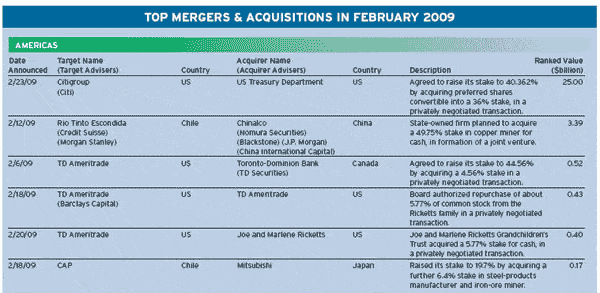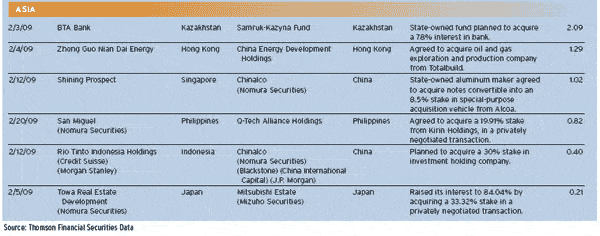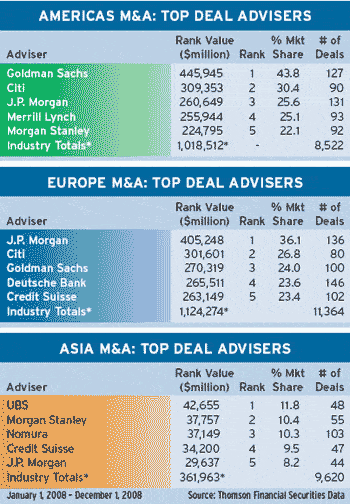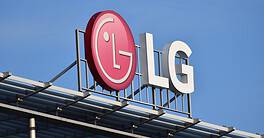MERGERS & ACQUISITIONS
|
Merger and acquisition activity in the middle market, which had held up relatively well in the credit crunch, has succumbed to the scarcity of credit, the poor economy and the lack of exit opportunities.
“While the large-sector buyout deals all but shut down in the second half of 2007, the M&A; activity in the middle market was more resilient up until recently,” says Harris Smith, chairman of the Association for Corporate Growth (ACG) and managing partner of private equity and strategic relationships at accounting and consulting firm Grant Thornton. ACG, which has more than 12,000 members, is an organization of M&A; and corporate-growth professionals worldwide that attempts to connect capital with investment opportunities through networking, research and tools.
“Middle-market deals were getting done primarily because they were not dependent on securing debt,” Smith says. “Now that credit has dried up, there has been virtually no activity since late summer 2008 in the middle market with the exception of some distressed situations, carve-outs of non-core assets by public companies and limited activity by strategic buyers,” he says.
The ACG-Thomson Reuters year-end 2008 survey of middle-market merger professionals found the most negative outlook in the history of the survey, with 86% of dealmakers saying the current M&A; environment is fair to poor. Most do not see it getting better any time soon, with 75% expecting it to be the same or worse in six months.
The financial services sector is most likely to see the greatest M&A; activity in the next six months, according to the 970 survey participants. Healthcare and life sciences comes next, followed by the energy industry, and manufacturing and distribution.
“Given the current deep freeze affecting the credit markets, private equity firms are spending less time pursuing new deals and more time performing triage on their portfolio companies,” says Dennis White, vice chairman of ACG and partner at the international law firm McDermott Will & Emery. “They will have to make some difficult decisions as to which of those companies will survive, which will be sold in distressed conditions and which will be left to expire,” he says.
The lack of acquisition financing has affected most private equity professionals, and 58% expect to put more equity into their deals in the next six months. Dealmakers do expect the debt markets to improve, which could be the potential first step toward reviving M&A; activity, says Mark Jones, chairman of ACG InterGrowth 2008, a conference to be held in Las Vegas in May. Jones, a partner at River Associates Investments, says, “Initially triggered by mortgage-related writedowns, the trifecta of an across-the-board repricing of risk, a shrinking universe of credit providers and a pervasive lack of confidence in near-term corporate sales and earnings projections have caused many companies to delay or reconsider altogether accessing capital markets.”
The volume of all worldwide mergers and acquisitions totaled $2.4 trillion in announced deals during the first three quarters of 2008, a decline of 28% from the same period a year earlier, according to Thomson Reuters. A wave of M&A; activity in the troubled financial services industry kept the comparison from being much worse. Middle-market deals were down 16% in the first nine months of 2008.
Asked to name the area with the greatest potential for private equity investments in the next six months, 60% of survey participants chose the United States, 12% selected China, and 5% mentioned India. Latin America got 5% of the vote, Eastern Europe received 4% and Western Europe 3%. No other country or region received more than 2% of the responses.



Gordon Platt
 * Figures may not add up, as more than one bank typically obtains credit for any one transaction.
* Figures may not add up, as more than one bank typically obtains credit for any one transaction.


